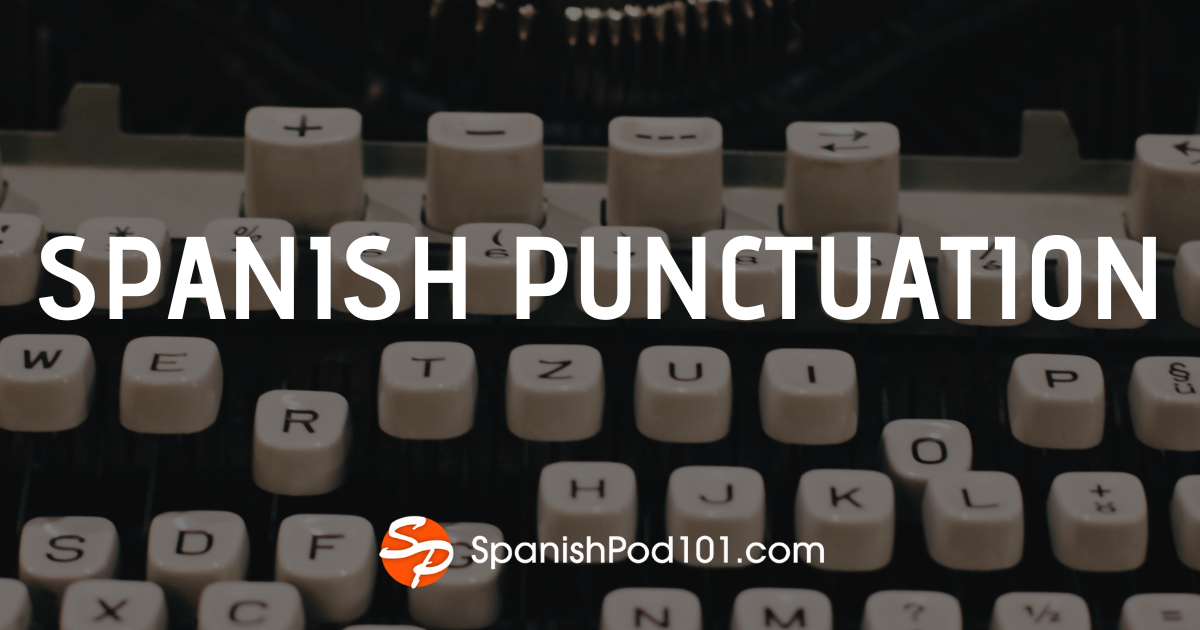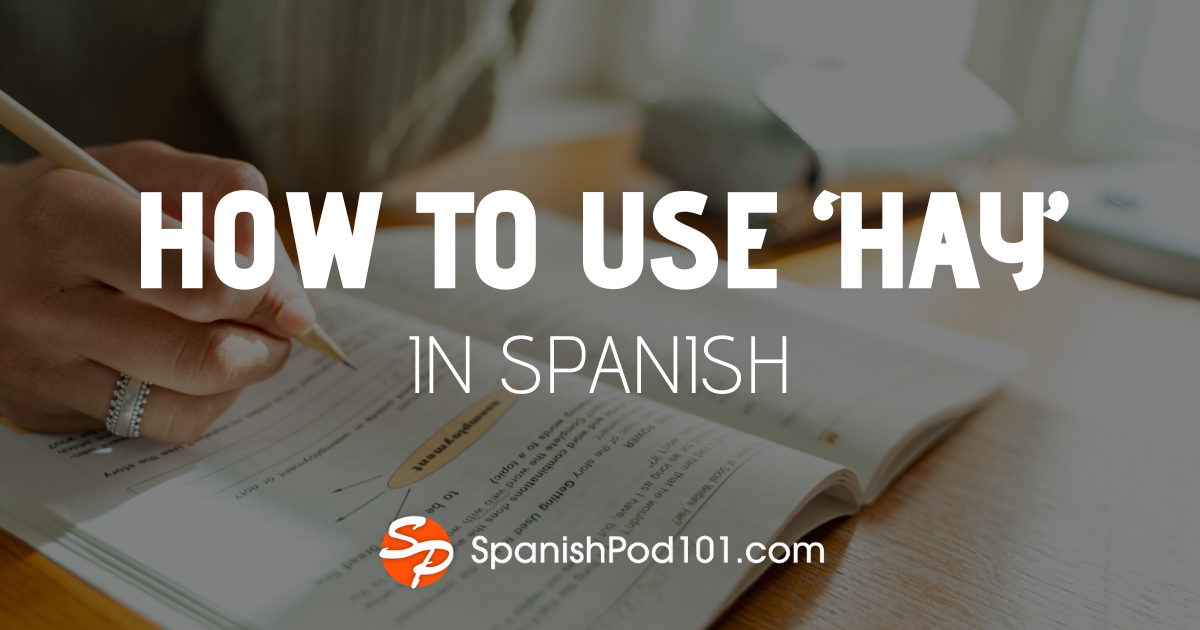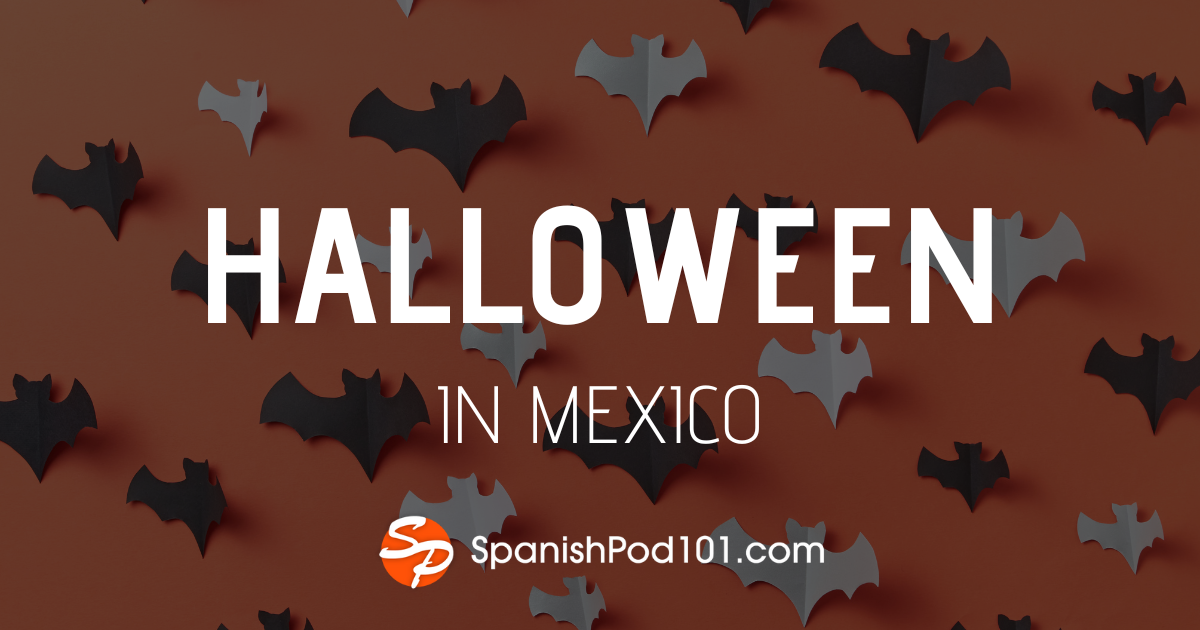
Do you enjoy traveling? We do! And we know that even though it’s possible to travel to most places speaking only English, we love the feeling of being able to understand the locals, even if it’s only a few words.
There’s some vocabulary that’s especially useful in these cases, such as “left” in Spanish or the four basic map directions. Asking for directions is one of the basic bits of knowledge that you most definitely need every time you travel. Even with Google Maps, you’ll probably end up needing a little bit of help at some point during your trip. No battery, no data, or maybe just a complicated place to get to! In any case, it’s better to be safe.
Often, when you learn directions in Spanish (or other languages), you learn how to ask where something is, as well as a few random words for positions. But if you ask someone how to get to your hotel, are you sure you’re going to understand the answer?
If you’re not too sure, there’s no need to worry, because we’re about to make sure you learn everything you need to ask, give, and receive directions when you travel to a Spanish-speaking country. We’re going to go far beyond the usual “left” or “right” in Spanish.

Table of Contents
- Cardinal Directions in Spanish
- Describing Positions
- Spanish Directions Using Landmarks
- Must-Know Phrases for Asking for Directions
- Must-Know Phrases for Giving Directions
- Vehicles and Transportation
- Example Situation
- How SpanishPod101.com Can Help You Learn More Spanish
1. Cardinal Directions in Spanish

We’re not sure if people are going to tell you to head north or south when you ask them for directions, but cardinal directions are still important to know when you’re trying to find your way around or understand where you are. They’re quite easy to learn, so let’s start with them, followed by the ordinal directions in Spanish!
Norte (“north”)
Francia está al norte de España.“France is north of Spain.”
Sur (“south”)
Este año me voy de vacaciones al sur de Alemania.“This year I’m going on holiday to the south of Germany.”
Oeste (“west”)
Portugal está al oeste de España.“Portugal is west of Spain.”
Este (“east”)
Barcelona está en el este de España.“Barcelona is on the east of Spain.”

Noroeste (“northwest”)
Antes vivía en el noroeste de Inglaterra.“I used to live on the northwest side of England.”
Noreste (“northeast”)
Dirígete hacia el noreste.“Head northeast.”
Sudoeste (“southwest”)
Creo que tengo que seguir la carretera que va hacia elsudoeste.
“I think I need to follow the road that goes southwest.”
Sudeste (“southeast”)
Australia está en el sudeste.“Australia is in the southeast.”
Centro (“center”)
Madrid está en el centro de España.“Madrid is in the center of Spain.”
Note: We realize that “center” isn’t a cardinal or ordinal direction, but we thought it was appropriate to include it in this section!
2. Describing Positions
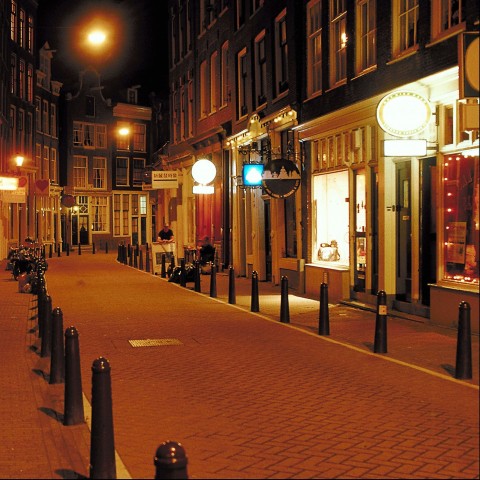
Now, this might be more like the type of vocabulary you were looking for. The following list of directions and positions in Spanish will help you describe where things or people are. Some of these words are simple prepositions, and some are more complex words or expressions used to describe a position.
En (“in,” “on,” or “at”)
Estoy en casa.“I’m at home.”
Delante de (“in front of”)
Ayer estuve delante de Marta, pero no me vio.“Yesterday I was in front of Marta, but she didn’t see me.”
Detrás de (“behind”)
Tienes una avispa detrás de ti.“There is a wasp behind you.”
Izquierda (“left”)
A vuestra izquierda veréis el castillo de la reina.“To your left, you will see the castle of the queen.”
Derecha (“right”)
Tengo un lunar en la mejilla derecha.“I have a mole on my right cheek.”
Dentro (“in” or “inside”)
¿Dónde estás? Yo estoy dentro.“Where are you? I’m inside.”
Fuera (“out” or “outside”)
No quiero salir fuera, hace frío.“I don’t want to go out, it’s cold.”
Hacia (“to”)
Estoy de camino hacia el aeropuerto.“I’m on my way to the airport.”
Desde (“from”)
No sé cómo ir al hospital desde aquí.“I don’t know how to go to the hospital from here.”
Cerca (“close”)
El restaurante de mi padre está cerca de tu casa.“My father’s restaurant is close to your house.”
Lejos (“far”)
La estación de tren está lejos de aquí.“The train station is far from here.”
Arriba (“up”)
¡Mira hacia arriba!“Look up!”
Debajo (“down,” “under”)
El lápiz está debajo del libro.“The pencil is under the book.”
Aquí (“here”)
¿Estás aquí?“Are you here?”
Allí – ahí (“there”)
Ahí no hay nada.“There’s nothing there.”
Al lado de (“next to”)
El banco está al lado de la farmacia.“The bank is next to the pharmacy.”
Por ahí (“that way” or “around there”)
Sigue por ahí.“Keep going that way.”
Mi móvil tiene que estar por ahí.
“My phone must be around there.”
Al otro lado (“on the other side”)
Mi casa está al otro lado del pueblo.“My house is on the other side of town.”
A la vuelta de la esquina ( just around the corner”)
La casa de Ana está a la vuelta de la esquina de la mía.“Ana’s house is just around the corner.”
En la esquina (“at the corner”)
Mis tíos viven en la esquina de la calle Mallorca con la calle Bruc.“My aunt and uncle live at the corner between Mallorca Street and Bruc Street.”
Enfrente (“right in front”)
¿Vives aquí? Yo vivo enfrente.“Do you live here? I live right in front.”
Al fondo (“back” or “end”)
El baño está al fondo a la derecha.“The toilet is at the end on the right.”
Entre… y (“between… and”)
La escuela está entre el hospital y el parque.“The school is between the hospital and the park.”
3. Spanish Directions Using Landmarks

Understanding or giving directions in Spanish isn’t all about where something is: you also need to know what that “something” is called so you can get to it! It sounds obvious, right? Well, as it turns out, it’s not that obvious to some people. Pay attention here; it’s important!
1- En la ciudad (“In the city”)
We’ll start with some places you can easily find in a city and that you might have to get to. Have you been to any Spanish cities before? Let us know in the comments!
Aeropuerto (“airport”)
Para llegar al aeropuerto tienes que seguir la carretera A-25.“To get to the airport, you need to follow the A-25 road.”
Estación de tren (“train station”)
La estación de tren está en el centro del pueblo.“The train station is in the town center.”
Estación de metro (“subway station”)
La estación de metro más cercana a mi casa es la de Collblanc.“The closest subway station to my house is Collblanc.”
Parada de autobús (“bus stop”)
¡No encuentro la parada de autobús!“I can’t find the bus stop!”
Centro de la ciudad (“city center”)
Hoy he estado todo el día en el centro de la ciudad.“Today I’ve been at the city center all day.”
Parque (“park”)
¿Has pasado por el parque hoy?“Have you been to the park today?”
Hotel (“hotel”)
Mi hotel en París era genial.“My hotel in Paris was great.”
Banco (“bank” or “bench”)
En mi pueblo solo hay un banco.“There is only one bank in my hometown.”
Note: Yes, the words for “bank” and “bench” in Spanish are both banco. You understand what they mean by the context.
Hospital (“hospital”)
¡Hay que llevarla al hospital!“We need to take her to the hospital!”
Iglesia (“church”)
La iglesia de esta ciudad es preciosa.“The church in this city is beautiful.”
Ayuntamiento (“city hall”)
Los ayuntamientos suelen estar en el centro.“City halls are usually in the center.”
2- En la carretera (“On the road”)
The following words will be especially useful if you need directions to drive somewhere. As we mentioned before, nobody knows when your GPS might fail, so these words for road directions in Spanish will come in handy when you need to ask the locals!
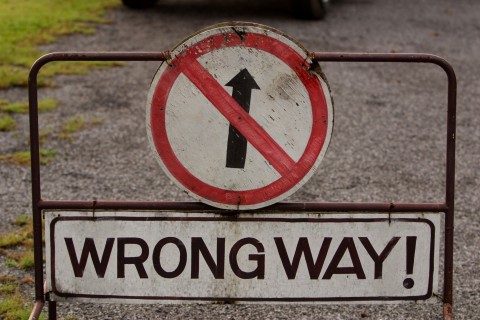
Intersección (“intersection”)
Después de esta intersección sigue recto y verás un edificio azul a la derecha.“After this intersection, keep going and you will see a blue building on the right.”
Rotonda (“roundabout”)
Gira a la derecha en esa rotonda.“Turn right on that roundabout.”
Semáforo (“traffic light”)
No te olvides de pararte en el semáforo.“Don’t forget to stop at the traffic lights.”
Paso de cebra or paso de peatones (“crosswalk”)
En este pueblo no hay ni un solo paso de cebra.“There isn’t a single crosswalk in this town.”
Puente (“bridge”)
Este puente tiene por lo menos cien años.“This bridge is at least 100 years old.”
3- En un edificio (“In a building”)
Have you ever been lost inside of a building? We have. Let’s try to help you prevent that from happening!
Baño or lavabo (“bathroom” or “toilet”)
Esta casa tiene dos baños.“This house has two bathrooms.”
Ascensor (“elevator”)
El ascensor está detrás de ti.“The elevator is behind you.”
Escaleras (“stairs”)
¡No te caigas por las escaleras!“Don’t fall off the stairs!”
Entrada (“entrance”)
La entrada está cerrada.“The entrance is closed.”
Salida (“exit”)
Ayer no encontraba la salida del centro comercial y tuve que pedir ayuda.“Yesterday I couldn’t find the exit to the shopping mall and I had to ask for help.”
Aparcamiento or parking (“parking lot”)
El parking de este edificio está bajo tierra.“This building’s parking lot is underground.”
If you feel this wasn’t enough, you might enjoy our Essential Spanish Vocabulary About Buildings.
4. Must-Know Phrases for Asking for Directions
Finally, we bring you what we’re sure you were looking for. Whenever you need to find your way in Spain, these are the questions you need to ask. The key to not getting lost anymore: Learn these phrases for asking directions in Spanish and, most importantly, don’t be shy. Ask someone when you can’t find what you’re looking for!
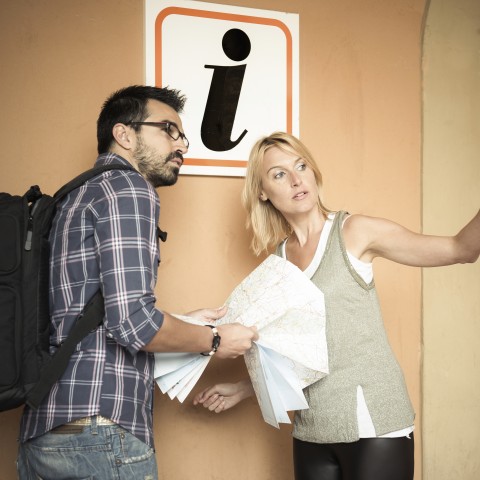
Disculpe… (“Excuse me…”) and ¿Me podría indicar…? (“Could you indicate to me…?”)
These two phrases are formal ways to begin asking someone for something. They both use the formal usted instead of the regular “you,” but this isn’t necessary and can be avoided.
If you don’t want to use the formal “usted,” you can say Disculpa and Me podrías indicar instead. They can be used separately, but also together, as in the following example: Disculpe, ¿me podría indicar dónde está el río? (“Excuse me, could you indicate to me where the river is?”).
If you’re interested, we have an article on other ways of saying sorry that might be helpful to you.
Estoy perdido/a (“I’m lost”) or Me he perdido (“I got lost”)
Estoy buscando la Alhambra, pero me he perdido.“I am looking for the Alhambra, but I got lost.”
¿Dónde está…? (“Where is…?”)
¿Dónde está el baño?“Where is the bathroom?”
¿Cómo se va a…? (“How do I go to…”)
¿Cómo se va a la playa?“How do I go to the beach?”
¿Está lejos de aquí? (“Is it far from here?”)
¿El Hotel Don Juan está muy lejos de aquí?“Is the Hotel Don Juan very far from here?”
¿Cómo se llega a…? (“How do I get to…?”)
¿Cómo se llega a la Plaza Mayor?“How do I get to Plaza Mayor?”
¿Por dónde se va a…? (“How do I go to…”?)
¿Por dónde se va a Barcelona?“How do I go to Barcelona?”
Gracias (“Thank you”)
Gracias is usually one of the first words to learn in Spanish, so you should already be quite familiar with it. You know how it goes: If someone helps you, you should thank them. If you want to learn a few more ways of thanking someone, you can check out our vocabulary list of Common Ways to Say Thank You.Gracias por tu ayuda (Thank you for your help”)
We thought we would add another way of saying thank you to this list, because this one emphasizes that you’re thankful for the help you just got from them. Locals will definitely enjoy hearing this phrase.a veo (“I see”)
This phrase is a rather simple one that will help you show the person you’re talking to that you understand what they’re saying. If you forget how to say it, remember you can just nod!Muy amable (“You’re very kind”)
This is another common phrase that literally means “very kind,” omitting the “you are.” You can use it together with gracias, but it also works on its own.5. Must-Know Phrases for Giving Directions
Now you know what to say when you’re lost, so it’s time to learn how someone will most likely answer. Once again, it’s important to pay attention! You won’t look too good in front of your friends or family if you mess this up! Here’s how to give directions in Spanish.
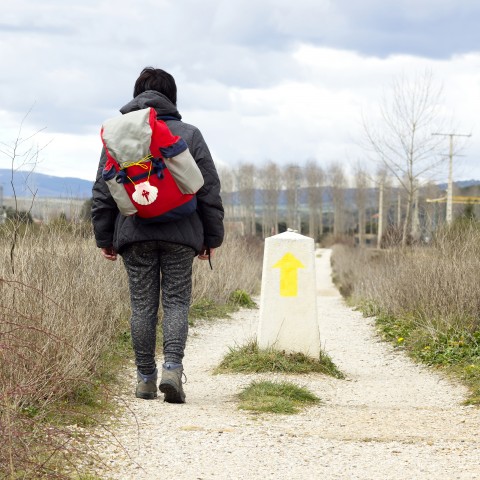
Ve recto (“go straight”)
Para llegar a la playa, ve recto.“To get to the beach, go straight.”
Da la vuelta (“turn around”)
Te has equivocado, da la vuelta.“You made a mistake, turn around.”
Ve hacia atrás (“go backwards”)
Te has pasado la casa, ve un poco hacia atrás.“You missed the house, go a bit backwards.”
Gira a la derecha/izquierda (“turn right/left”)
Gira a la izquierda después de esta farola.“Turn left after this street light.”
Sigue recto (“keep going straight”)
Una vez llegues a la farmacia sigue recto para llegar a mi casa.“Once you reach the pharmacy, keep going straight to get to my house.”
Sigue por aquí (“keep going through here”)
Mira, aquí hay una señal, sigue por aquí.“Look, there is a sign here, keep going through here.”
Dirígete hacia… (“head [to]…”)
Dirígete hacia el este.“Head east.”
Cruza (“cross”)
Cruza el puente para llegar a mi casa.“Cross the bridge to get to my house.”
Acelera (“accelerate”)
No vayas tan lento, ¡acelera!“Don’t be so slow, accelerate!”
Frena (“slow down”)
Vas demasiado rápido, frena un poco.“You’re going too fast, slow downa little.”
Sigue a ese coche (“follow that car”)
¡Corre, sigue a ese coche!“Hurry, follow that car!”
Note: You probably won’t need this one, but haven’t you always wanted to do this like in the movies?
Es imposible perderse (“You can’t get lost”)
Ve recto por esta calle hasta que veas un edificio alto de color verde. Es imposible perderse.“Go straight through this street until you see a tall green building. You can’t get lost.”
No tengo ni idea (“I have no idea”)
A: ¿Cómo se va al ayuntamiento?B: No tengo ni idea, no soy de aquí.
A: “How do I go to the city hall?”
B: “I have no idea, I’m not from around here.”
Note: Let’s be honest, when you ask someone how to get to a place, there’s a chance they won’t know. We want you to be ready for that kind of answer.
6. Vehicles and Transportation
The last vocabulary list we’re including in this article is quite simple, but will come in handy even if you already know some of these words.
When you ask for directions, it’s not all about knowing where to go, but also about how to get there. Sometimes this includes public transportation, or some other kind of transportation. How about we take a look at some of these?
We also have a list of Spanish Words Related to Vehicles for you to check out. Be careful, though! In Mexican Spanish, a car is called carro, but in European Spanish, it’s coche (and carro just means “shopping cart”).
Autobús (“bus”)
El autobús llega a las cinco y media.“The bus arrives at half past five.”
Tren (“train”)
Tienes que coger el tren que va a San Sebastián.“You need to take the train that goes to San Sebastián.”
Coche (“car”)
Vamos a alquilar un coche para nuestras vacaciones.“We’re going to rent a car for our holidays.”
Moto (“motorbike”)
Siempre me ha dado miedo montar en moto.“I’ve always been scared of riding motorbikes.”
Bicicleta or bici (“bicycle” or “bike”)
Iremos a casa de Pedro en bici.“We’ll go to Pedro’s house by bike.”
Taxi (“cab”)
¿Llamamos un taxi para ir al aeropuerto?“Should we call a cab to get to the airport?”
Avión (“plane”)
Para ir a Japón vas a tener que coger un avión.“To go to Japan, you’re going to need to take a plane.”
Helicóptero (“helicopter”)
Mi prima fue a Nueva Zelanda y sobrevoló Mordor en helicóptero.“My cousin went to New Zealand and flew over Mordor on a helicopter.”
Barco (“boat”)
Solo puedes llegar a esa isla en barco.“You can only get to that island by boat.”
Yate (“yacht”)
Mis amigos están ahorrando para comprar un yate el año que viene.“My friends are saving up to buy a yacht next year.”
7. Example Situation

To help you better understand how to use all of these phrases and sentences together, we thought we would add this short example conversation:
| A: ¡Hola! Estoy perdido, ¿me podrías ayudar? B: Por supuesto. A: ¿Cómo se va a la Plaza Mayor? B: Es muy fácil. Ve recto por esta calle y cuando llegues al río, crúzalo y gira hacia la derecha. La verás muy pronto. A: Muchas gracias. ¿Está cerca? B: Sí, se puede ir andando, pero puedes coger un autobús si quieres. A: ¿Dónde está la parada de autobús? B: Está justo aquí, detrás nuestro. Tienes que coger el autobús L2. A: Gracias. Tengo otra pregunta: ¿cómo se llega al ayuntamiento desde la Plaza Mayor? B: Está en la misma plaza. Es un edificio alto y antiguo que está entre el banco y el hospital. A: ¡Perfecto! B: Si te gusta el arte, hay un museo precioso detrás del ayuntamiento. A: ¡Me encanta el arte! Gracias por la recomendación. B: De nada. ¡Disfruta la visita! | A: “Hello! I’m lost, could you help me?” B: “Of course.” A: “How do I go to the Main Square?” B: “It’s very easy. Go straight through this street and when you get to the river, cross it and turn right. You’ll see it really soon.” A: “Thank you very much. Is it close?” B: “Yes, you can go by foot, but you can catch a bus if you’d like.” A: “Where is the bus stop?” B: “It’s right here, behind us. You need to catch the L2 bus.” A: “Thank you. I have another question: how do I get to the city hall from the Main Square?” B: “It’s in that same square. It’s an old tall building between the bank and the hospital.” A: “Perfect!” B: “If you like art, there’s a gorgeous museum behind the city hall.” A: “I do love art! Thank you for your recommendation.” B: “You’re welcome. Enjoy your visit!” |
8. How SpanishPod101.com Can Help You Learn More Spanish
We hope that after reading this article you feel like there’s no way you could possibly get lost when you travel to Spain. But even if you do get lost, we’re sure you’ll be able to ask for directions in Spanish and find your way to wherever you’re going. However, we wouldn’t suggest traveling to Spain only knowing this! If you want to talk to the locals, you’re going to need some more vocabulary.
If you’re planning on going to the beach, you’ll thank us for this list of twenty Spanish words you’ll need for the beach. You might also be interested in learning these ten verbs you’ll need for traveling, or if you’re organizing your next holiday, you might also like to learn how to talk about your winter holidays or summer holidays.
Before you go, let us know in the comments how you feel about asking and giving directions in Spanish now. Are there any words or phrases we didn’t mention? We look forward to hearing from you, and will do our best to help you out!
Happy Spanish learning!






